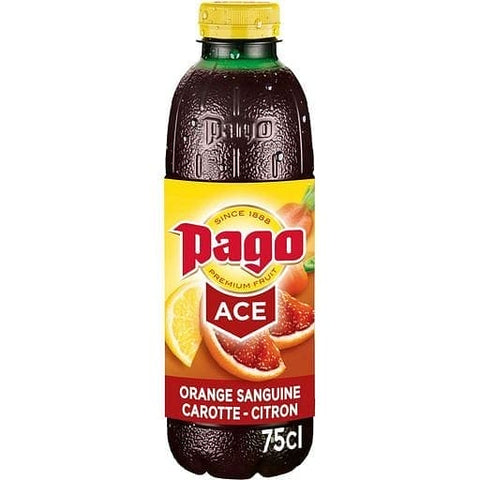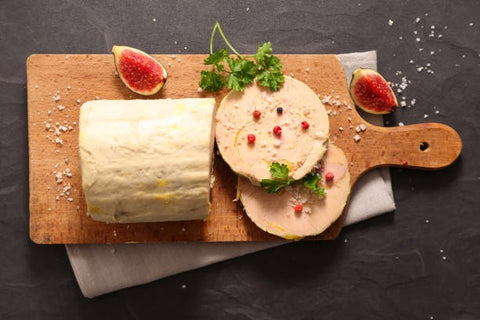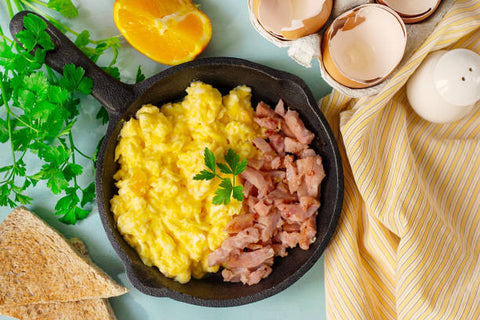Do you want to try some new French pastry recipes? Do you want to discover more about your French forefathers and mothers? The origins of some traditional French pastries can be found here. Patisserie originally referred to anything baked in the dough, such as a meat pie, rather than a fancy or sweet dessert. This concept persisted into the nineteenth century, though by that time the phrase had come to refer to the sweet and often beautiful confections that are implied today. From flaky croissants to delicate macarons to beignets, here's a taste of traditional French pastries.
In France, there are two types of bakeries: patisseries (expensive cakes and cream-filled stuff) and boulangerie (bread-like). Anyone who has visited France has certainly seen a vitrine filled with a colorful, magnificent (might be daunting at times) array of scrumptious desserts, pastries, and cakes in a French boulangerie or patisserie. Many of the dishes are traditional and authentically French, with little variation in the formula. The French create magic when they blend flour, water, and butter. Pastry varies from bread in that it has a higher fat content, resulting in a crumbly or flaky texture. A superb pastry should be greasy, fluffy, and light but it must be sturdy enough to hold the weight of the stuffing. These buttery and delicious pastries should be familiar to any serious baker.
- Croissant
The humble croissant is arguably France's most famous pastry. A great croissant should have a lovely cross-section with a honeycombed interior when sliced in half. Bonus: you can make almond versions with day-old croissants.
A croissant is a buttery pastry that has its origins in Austria but is most often identified with the country of France. Croissants, like other viennoiseries, are constructed from layers of yeast-leavened dough and are named for the historical crescent shape in which they were first baked. It is necessary to load the dough with butter before rolling and folding it multiple times in succession, and then rolling it into a thin sheet, which is known as laminating. As a result, the texture is layered and flaky, similar to puff pastry. They have a great flavor because of the butter. Perhaps it's because croissant demand is higher in France than anywhere else, making them fresher and hotter, and thus far more delicious.
- Baguette
Baguette is a French word that means wand or stick. A baguette is a loaf of bread that is quite long, made from basic lean dough that is synonymous with France, specifically Paris. It's essentially a yeast-leavened baked product with a lean texture. Despite the time-consuming preparation procedures, a baguette's simplicity is what distinguishes it. The characteristic of a truly good baguette is the sound it makes when breaking apart the finely polished crust to reveal a soft, sturdy center. These delicacies are best eaten the day they're cooked, with a liberal smear of homemade or local butter. It stands out for its length and crisp crust. Because this type of bread bakes quickly, it is frequently the first item on the menu in French bakeries in the morning.
- Madeleines
When done right, these characteristic shell-shaped tea cakes are created with eggs, plain flour, sugar, and plenty of butter—and they're lighter than air. Of course, with a cup of tea. They have a distinct shape, with one side having tapered edges and the other having bumpy edges. They're frequently served hot in French markets with coffee in the morning or at 4 p.m. goûter, the French counterpart of afternoon tea. A madeleine is a little, classic cake (baked in the French style) from the Lorraine communes of Liverdun and Commercy in northeastern France. During her trip, a young lady named Madeline is claimed to have been handed these miniature cake-like sweets, and when she returned to France, she brought the recipe with her. After that, this pastry was named Madeleines.
- Macaron
Because of its rainbow of colors and flavors, this sweet meringue-based confection has gained much attention for many years. It's also known as Luxemburgerli. The macarón is typically made with crushed almonds, granulated sugar, icing sugar, almond powder, or egg whites, with a buttercream, ganache or jam filling sandwiched between two brittle shells. The word macarone comes from the Italian word meringue. This dessert is distinguished by its smooth, squared top, ruffled circle, and flat base. It's light and moist, and it melts quickly in the mouth. Macarons are available in a wide range of flavors, from classic to experimental
.
- Paris-Brest
This show-stopping French pastry makes an excellent dessert table centerpiece. A Paris-Breast is traditionally made from a ring of choux pastry shaped like a bicycle wheel and filled with praline-flavored cream and icing sugar. An ever-growing number of cream puffs, filled with creamy hazelnut custard and typically topped with an almond cap, crunchy sugar, or a crumbly cookie crust, are appearing on menus all over the country, and for good reason. The toasted nutty flavor and aroma of praline cream should always dominate the perfect Paris-Brest, regardless of the innumerable unique variations and fresh spins on this classic dish. The baked (unfilled) Paris-Brest can be kept in an airtight tin for several days or frozen.

- St.Honoré
A distant relative of the Paris-Brest, the St. Honoré is named after the French patron saint of pastry cooks, St. Honoré de Beauvais. Gâteau St-Honoré is a dessert that combines choux pastry and shortcrust pastry. It starts with a puff pastry dough base, which is then topped with a choux ring and filled with pastry cream. These delectable ingredients combine to create the ultimate indulgent treat appropriate for a Parisian pastry shop. Sugar-dipped cream puffs serve as the final garnish. Choux pastry is used to construct the profiteroles (pastry balls) that are placed on the ring, as well as to pipe a ring around the base. The crunchiness of the pastry paired with the thick Chiboust cream will keep you going back for more, no matter how you enjoy your St. Honoré cake.
- Kouign-Amann
This round crusty cake has been re-popularized at his various pastry shops around the world. Because it follows the same method of folding in layers of butter and sugar, the bread dough is frequently compared to puff pastry. During the gentle baking, the dough puffs up to form numerous sheets; as a result, the crust becomes crunchy and crackles beautifully when bitten into while the pie is cooling. Consider kouign-Amann to be a denser variant of a croissant that has been coated with sugar. In France, the kouign-Amann is served as a dessert or during teatime, known as le quatre-heures. Bread dough is still used as the base: four parts dough, three parts sugar, and three parts butter. This flaky, rich delicacy is native to France's northwest Brittany region and is laminated with butter and sugar for a flaky, rich delight with a caramelized outer crust. Kouign Amann means butter cake in Breton.
- Mille-feuille
The layers that make up this French pastry are formed by layering puff pastry with pastry cream and repeating the process at least three times to make this meal. The top layer is sprinkled with sugar and sometimes cocoa powder, or coated with fondant, for a more upscale look. This isn't so much a hint as it is a reality of life: cutting through mille-feuille is difficult. I believe that freezing it for approximately an hour and then slicing it with a very sharp knife is the best approach. The term mille-feuille comes from the French word mille-feuille, which refers to the dish's lavish stacking of pastry. Airy, crunchy, flaky, and indulgent in every aspect, it's a traditional French pastry. These dainty pastries will offer a touch of sophistication to any dinner setting. The light, airy puff pastry pairs nicely with the rich, creamy pastry cream.
9. Opera cake
An opera cake was invented by French pastry chef Cyriaque Gavillon in 1955. Although two theories have been presented, I'm not sure why it's named an opera cake. The first is that it reminds his wife of the Palais Garnier, the Paris Opera House, and the second is that it is six layers thick, like an opera, and iced on top. The iconic French Opera Cake has six layers of almond sponge cake, three layers of coffee French butter cream, three layers of rich chocolate ganache, and a chocolate glaze on top! After being built as a gigantic square or rectangle, it's cut into huge bar-shaped slices. I've seen it done a million different ways, but I wanted to make it even more stunning by doubling the layers.
- Éclair
According to the English Dictionary, a cake with a lengthy shape but a brief duration. According to John Ayto's An A-Z of Food and Drink, the fundamental meaning of eclair in French is lightning, and one (not very persuasive) explanation proposed for its use to these cream-filled choux-pastry treats is that the light sparkling from their fondant icing coating suggested it. While the conventional presentation is chocolate icing with vanilla-scented filling, bakers have experimented with everything from black currant to caramel to coffee. The dough is made into an oblong shape with a pastry bag and cooked until crisp and hollow on the inside 1inside. After the pastry has cooled, it is filled with custard, whipped cream, or chiboust cream, and iced with fondant icing. Other filling alternatives include pistachio and rum-flavored custard, fruit-flavored fillings, and chestnut purée. In certain circumstances, the icing is caramel, and the treat is referred to as a bâton de Jacob.
11. Tarte Tatin
The gooey butter and sugar ooze over the apples in this renowned French apple dessert or Tarte Tatin, which is baked pastry-side up and then turned before serving. There are various fascinating legends surrounding its creation, the most well-known of which is an unintended flip by a desperate baker who served the tart anyhow, and it rapidly became a classic. The apples are effectively hidden inside the dough, resulting in a topsy-turvy Tarte Tatin. The Tarte Tatin was named after the Tatin sisters, who created it and sold it at their hotel as a specialty dish.”
The origins of the tart are unknown, but the most common story is that Stéphanie Tatin, who did the most of the cooking, became overworked one day. She began by creating a traditional apple pie, but the apples were overdone in butter and sugar. She attempted to preserve the meal by placing the pastry base on top of the apple pan when she smelled it was burning.
12. Religieuse
Consider the religieuse to be a pinkie-out, over-the-top cream puff. In most cases, it's composed of two layers of choux pastry that are filled with pastry cream and are progressively larger. Each pastry is frosted and iced before being linked together to form a whole. When the pastry is covered with chocolate icing and piped vanilla cream, it is said to resemble a nun's habit, which accounts for the unusual name of the dessert. It is made up of two choux pastry casings, one larger than the other, that are filled with crème, usually chocolate or mocha. Each casing is covered in a ganache that complements the flavor of the filling, and then joined together with piped butter cream icing. The dish was initially rectangular, but by the end of the nineteenth century, it had taken on a round shape, earning it the moniker religieuse, which means "nun."
13. The Chouquettes
Choux pastry bits coated with sugar crystals are known as chouquettes. They are poetically referred to as "Pets de nonne" (Nun's farts) when baked in oil. They are a classic Parisian dessert that dates back to the 16th century when pastry chef Popelini created the "Popelin," an oven-dried dough cake for Catherine de Medici. Antonin Carème's creation in the 18th century, when he altered the recipe for oven-dried dough to make choux pastry, is the source of our present chouquettes.
More than national pride, French pastry is an art form to be thoroughly embraced. The ideal morning pick-me-up is breaking into a warm pastry before pushing through the day. We also owe thanks to the French, who have refined the art of pastry-making.




